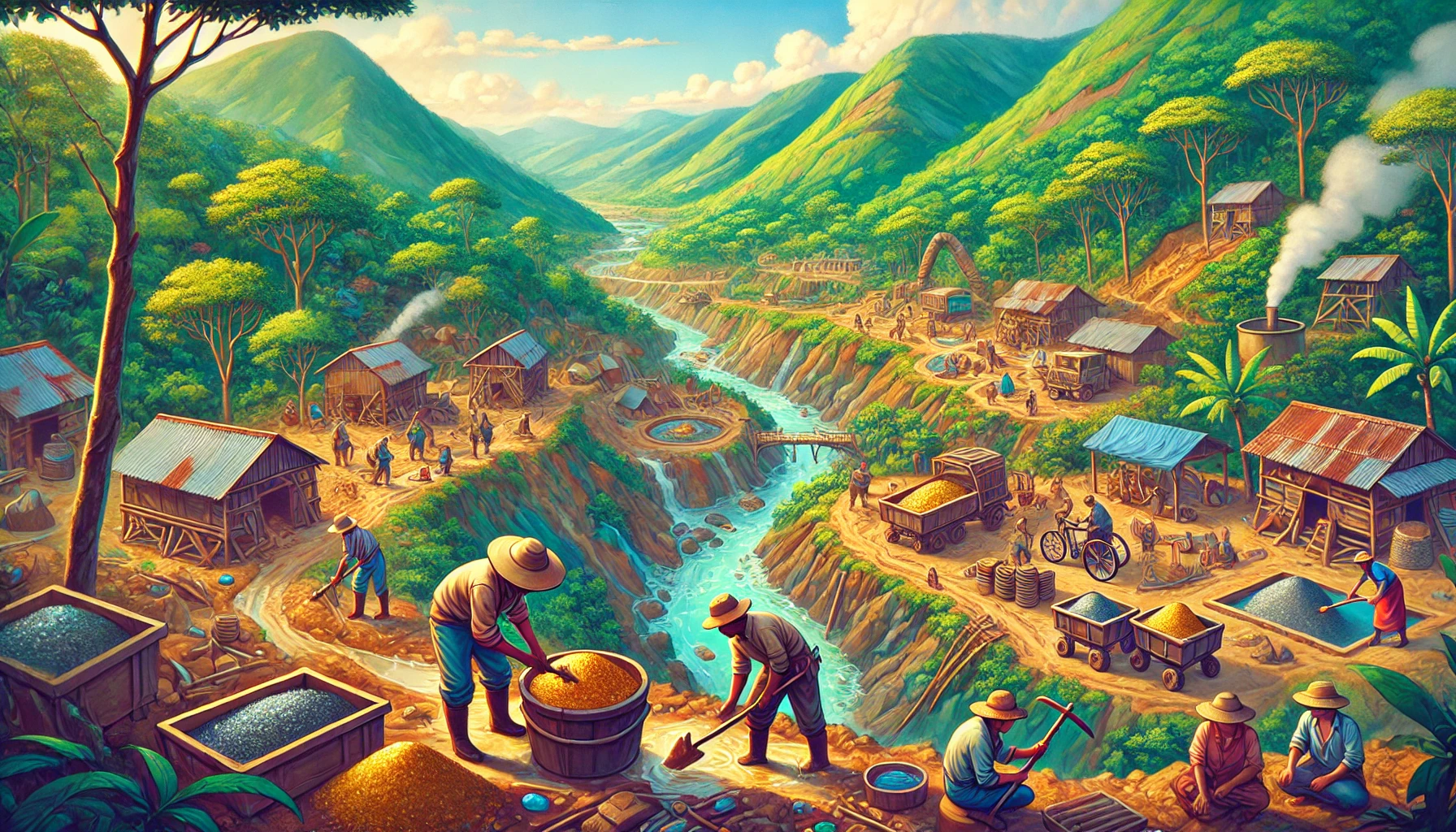Transforming Artisanal Mining: The World Bank's Vision for Sustainability and Economic Impact
The World Bank's renewed framework for artisanal and small-scale mining (ASM) focuses on professionalizing the sector to enhance sustainability, improve regulations, and promote financial inclusion, aiming to unlock its potential for global economic growth and poverty reduction. Stronger partnerships and government involvement are critical to achieving these goals.

The World Bank’s renewed framework for supporting artisanal and small-scale mining (ASM) presents a strategic shift in addressing the challenges and opportunities of the sector, which has long played a significant role in global economic development. The report, compiled by the World Bank and its partner institutions, including contributions from experts at the University of Surrey and the International Finance Corporation, offers a fresh perspective on how ASM can be better integrated into formal economic systems while fostering sustainability and inclusivity. ASM, which directly employs more than 45 million people and indirectly supports over 225 million globally, is especially crucial in rural and impoverished areas of Latin America, Africa, and Asia. While ASM contributes significantly to the extraction of vital minerals such as gold, cobalt, diamonds, and tantalum, it faces substantial challenges related to informal operations, environmental damage, and a lack of access to financial systems and legal markets.
The Growing Economic Importance of ASM
The framework underscores the importance of ASM in both national and international economies, highlighting how it has grown from a marginalized sector to a key supplier of minerals for global supply chains. For example, ASM now accounts for 20% of the global gold supply, a sharp rise from 4% in the 1990s, and 12% of the world’s cobalt, up from 5% in the early 2000s. Despite its economic significance, ASM remains largely informal, leading to numerous issues, including environmental degradation, unsafe working conditions, and exploitation. In many cases, artisanal miners operate without formalized land rights, legal recognition, or access to basic financial and technical support, which exacerbates the challenges they face.
Professionalization: A Pathway to Formalizing ASM
One of the core recommendations of the World Bank’s framework is the professionalization of ASM, which involves improving organizational capacity, facilitating financial inclusion, and enhancing infrastructure to allow miners to access legal and regulated markets. The report stresses that ASM, when properly supported and regulated, can play a pivotal role in poverty alleviation, particularly in rural areas where traditional farming livelihoods have been impacted by climate change. However, a key obstacle remains the lack of effective regulation and the tendency of many governments to prioritize large-scale mining (LSM) operations, which are easier to regulate and often bring in more immediate revenues through foreign direct investment.
Government’s Role in ASM Development
The renewed approach calls for governments to take a more active role in ASM by creating responsive regulatory frameworks that ensure miners can operate legally and sustainably. This includes supporting environmental stewardship, promoting gender equality in the sector, and fostering local governance models that are adapted to the specific needs of ASM communities. The World Bank emphasizes that governments should incentivize miners to adopt standards that improve mine performance, safety, and social responsibility. By doing so, ASM can be transformed from an informal, risky operation into a sustainable contributor to national economies.
Key Areas of Intervention for World Bank Support
The framework also identifies several intervention areas where the World Bank and its partners can focus their efforts to support ASM. These include advancing environmental stewardship at mine sites, expanding access to financing options for miners, and building capacity among ASM actors to improve their ability to operate within legal frameworks. The World Bank suggests that digital solutions can play a significant role in these efforts, particularly in improving access to regulated financial systems and tracking environmental impacts more effectively. Additionally, the framework encourages the development of "circular economy" practices within ASM, which would help reduce waste and improve the sustainability of mining operations by reusing materials and minimizing environmental harm.
A Call for Stronger International Partnerships
Despite decades of investment of more than USD1 billion globally the ASM sector has struggled to achieve long-term sustainability due to short project durations, limited funding, and complex political and governance challenges. The World Bank report acknowledges that while there have been successful pilot projects, scaling them to have a broader impact remains a major challenge. Many of the projects aimed at improving the sector have been limited in scope, and the heavy emphasis on pilot programs without plans for scaling up has hampered long-term development.
The framework also calls for stronger international partnerships to address the global nature of ASM supply chains. It highlights the need for better coordination between international market demands, such as the need for conflict-free minerals, and the domestic priorities of ASM-producing countries. The World Bank believes that by fostering partnerships between governments, private companies, civil society, and international institutions, a more unified and effective approach can be developed to support ASM. These partnerships will be critical in scaling up support efforts, particularly in financing, regulation, and capacity-building initiatives.
The World Bank's new framework for ASM recognizes the sector’s potential as a driver of sustainable economic development, especially in rural areas. However, unlocking this potential will require a fundamental shift in how ASM is viewed and supported by governments, international organizations, and other stakeholders. By focusing on professionalization, regulatory reform, and sustainable practices, the World Bank aims to help ASM become a more formalized and resilient sector that contributes to global development goals while protecting the environment and improving the livelihoods of millions of people.
- FIRST PUBLISHED IN:
- Devdiscourse
ALSO READ
World Bank's Historic Replenishment Secures Future for 78 Nations
World Bank Approves $250M for Türkiye’s Public Health Emergency Preparedness
UPDATE 2-World Bank wins $100 bln replenishment of fund for poorest countries
Digital Transformation Powers Growth in Services Sector Across East Asia and Pacific: World Bank Report
World Bank Launches $454M THRIVE Initiative to Bolster Ukraine’s Healthcare System Amid War










